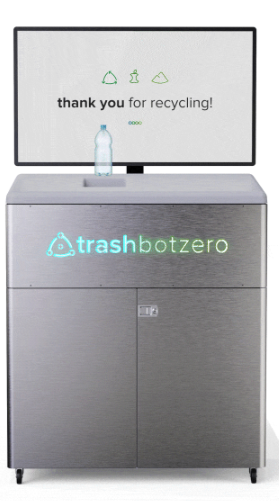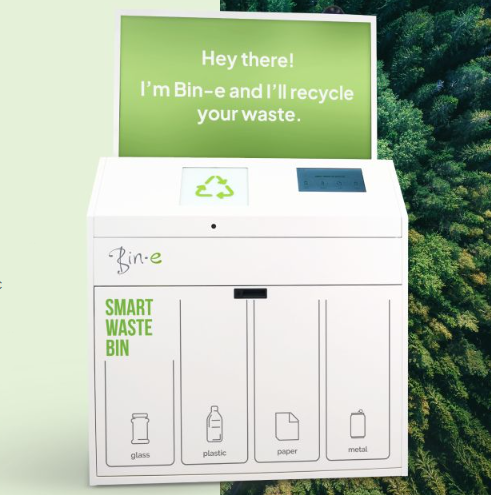TrashBot: An Automatic Waste Sorting Bin
The smart bin developed by CleanRobotics in Pittsburgh, PA, is the world’s first smart waste bin. It automatically separates landfill waste from recyclables, addressing global waste challenges. By leveraging machine learning, computer vision, and a network of sensors, TrashBot operates in a friendly manner and reduces the workload for sanitation workers. If there are changes in the community’s recycling program, You can update TrashBot’s software wirelessly to adapt. Remarkably, a single TrashBot has the potential to replace several conventional trash and recycling bins currently in use.

Here’s how the TrashBot system works:
- Analysis: When you place the garbage into TrashBot’s single opening, cameras and sensors swiftly identify the type of discarded item.
- Weighing and Drainage: The system weighs on a Teflon-coated plastic shelf and drains any liquids if present.
- Decision: CleanRobotics software determines whether the item should go to the landfill or recycling facility and directs it to the appropriate bin below.

Bin-e: The Smart Waste Bin
The smart bin is an innovative AI-based smart waste bin designed for public spaces. Its purpose is to streamline recycling processes by automating waste sorting and management. Let’s explore its.
key features:
- AI-Based Waste Recognition: Bin-e employs an advanced recognition system powered by artificial intelligence. This system achieves an impressive accuracy rate of over 92% in identifying different types of waste.
- Automatic Waste Sorting: Once the waste is recognized, Bin-e automatically sorts it into the appropriate fractions. This seamless process ensures that each type of waste ends up in the right compartment.
- Plastic and Paper Compression: Bin-e efficiently compresses plastic and paper waste. It minimizes the frequency of bin emptying, contributing to more efficient waste management by reducing volume.
- Fill Level Control and Alerts: Bin-e has fill-level sensors. These sensors monitor the bin’s capacity and trigger alerts when it’s time for emptying. You’ll receive notifications via phone or email when the bins are full.
- Real-Time Data Management: All data collected by Bin-e is instantly transferred to the cloud. This real-time processing allows for effective waste monitoring and optimization.
- App for Statistics and Reports: Bin-e’s dedicated app provides detailed statistics on the waste collected. It also offers insights for optimizing waste collection and monitors the technical status of your Bin-e devices.
Sources:-


